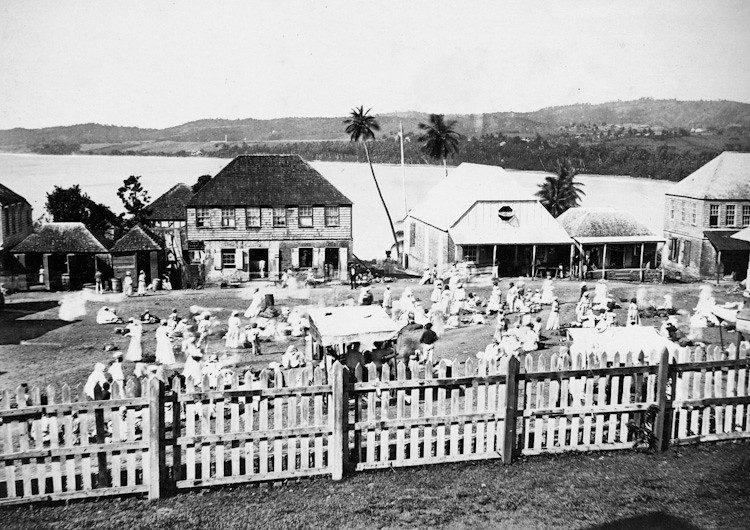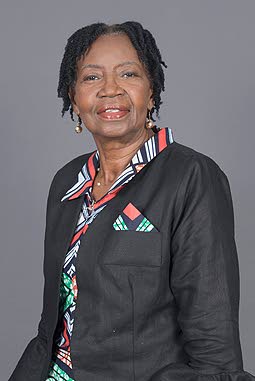Unity, disunity in pre-Emancipation Tobago

Dr Rita Pemberton
THE NATURE of Tobago’s social structure was determined by its pre-Emancipation experience as a British-owned plantation colony.
At its acquisition, the British government was anxious to bring the island into full operation as a sugar producer; hence it was divided into lots which were sold in London to people who agreed to bring their plantations into production within two years.
Thus the basis for a white ruling class which was politically, economically and socially dominant was established in Tobago.
Plantation labour requirements were provided by enslaved, imported Africans who formed the servile class. Because of the island’s labour needs and the urgency to make plantations operative, they were imported in large numbers, resulting in the establishment of a numerically dominant black servile class.
Inherent in this arrangement was the potential for conflict based on colour, class and the prejudices which these stimulated.
However, there were other elements which made social structures much more complex than a simple division between whites and blacks. Distinctions of colour, race, social class and occupation provided the bases for complexity and disunity in this small society.
The dominant white class, made up of Englishmen and Scotsmen, poorer and richer whites, was not united. The upper crust was the small group of Englishmen who were officials of the imperial government: the governor, military officials, the administration, some of the large planters and their attorneys, the wealthy merchants and a few professionals such as doctors and lawyers who formed the corpus of the island’s decision-makers and the social elite.
Next were Scotsmen, to whom social status was ascribed because of their colour, while they were considered inferior to the English because of their Scottish origins. Many were poor men seeking to make their fortune. They started as clerks, small shopkeepers, skilled workers whose services were in great demand in the process of estate establishment.
Some became overseers and rose to acquire estates, and a few joined the ranks of large plantation owners. This was made possible by the fact that the diminished economic returns from sugar production plunged the island into economic decline which stimulated a loss of investor interest and a strong desire of owners to get rid of their properties. Estates changed hands and after 1830, there was an increase in the number of absentee owners, which created a need for attorneys, managers and overseers, which positions were mainly filled by Scotsmen.
Even though a social barrier existed between Englishmen and Scotsmen, they were united in the need to restrain the servile class. Scotsmen played an important role in a society where the small white group lived in fear of the superior numbers of blacks who were not happy with their enslaved status.
Boosting the white population for defence against black insurrection was an important function. Their role was to help maintain the status quo and keep the remaining elements of the population in their ascribed places.
This was of particular significance with respect to the enslaved African population, who had sent strong signals of resistance to enslavement and repression very early in the island’s history as a sugar plantation colony.
Despite the strong prejudices against the black population, sexual relations between white men and black women produced a new class of people. The presence of the resulting coloured population provided the basis for further complexity in social relations. Colour, and specifically gradations of colour, became important factors in determining social status.
Those with colour bordering on whiteness stood better chances of advancement in the society than those with darker pigmentation. There were enslaved coloured people who expected to be positioned at a different level from those with darker skins. They occupied a status above that of the enslaved, and some coloured enslaved workers were given positions of superiority over enslaved black workers in the plantation regime.
Colour became a means to mobility within the ranks of the enslaved as well as in the wider society. This served to promote self-hate among members of the black population as well as for disunity between the members of the different colour groupings.
The majority of the free-coloured population was poor, and most lived in and around Scarborough, particularly in the Rockly Vale, Friends Field, Calder Hall and Morne Quiton areas. The men worked in the skilled trades as artisans, bakers, butchers and fishermen, while the women engaged in petty trading around the town, which they ultimately controlled. Some were hired out as jobbers on plantations and were seldom field workers.
Although most of the coloured population were poor, some were freed by their fathers, so there was a free coloured element in the population. That freedom provided them with enhanced status over the enslaved black workers and the members of the poor free coloured population, from whom they sought to remain socially distant. Some coloured people benefited from access to education, which was paid for by their fathers, and yet others inherited property from their fathers.
The members of the white society were particularly afraid of the ambitions of this group of educated free coloured, and were determined to frustrate their desires to be embraced into white society, but depended on their assistance in controlling the rebellious enslaved Africans.
However, there was a strong determination among the white ruling class to keep the coloureds in their place. To maintain the required social distance between the two groups, limitations were imposed on the rights and privileges of the free coloureds, who were not allowed to hold public office or allowed voting rights. Their strong objections to the political disabilities they suffered created tensions between the free coloureds and the ruling whites.
The small group of free blacks on the island included individuals who had purchased their freedom, the numbers of whom increased during the apprenticeship period, or were rewarded by their owners for some good deed such as revealing a plot or saving the life of a white person.
Free blacks were primarily skilled craftsmen who lived in the urban area associated with enslaved blacks and participated in their activities, much to the consternation of the white ruling class, who sought to promote disunity between the groups as a strategy of social control.
The elements of Tobago’s pre-Emancipation society provided the bases for race, class and colour discrimination which were intended to maintain a status quo which ensured white domination. Despite an aura of unity, there were tensions in the society, both within and between the various groups, which created a socially complex society which was most strongly affected by difference and disunity.


Comments
"Unity, disunity in pre-Emancipation Tobago"